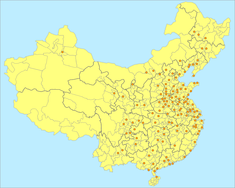
Every 1M+ Chinese City #8
Last updated: Wednesday April 19th, 2023
Report this blog
Welcome to the final instalment of the Chinese city blogs. Here I will go through 17 cities in southwestern China.
Chengdu
Name
Simplified Chinese: 成都
Traditional Chinese: 成都
Pronunciation
Mandarin pinyin: chéng dū
Cantonese jyutping: sing4 dou1
Population
citypopulation.de: 16,600,000
census 2020 (metro): 15,419,445

Chengdu is the capital of Sichuan and the largest city in western China. Located in the western edge of the Sichuan Basin, it is known as the "Country of Heaven" or "Land of Abundance". During the Three Kingdoms Period in the 3rd century, it was the capital of Shu, along with Luoyang and Nanjing. And throughout history, it was often a refuge for emperors who fled Xi'an or Luoyang from invaders.
Today, Chengdu is one of the most important economic, transportation and cultural centres, with the second highest GDP among all provincial capitals (only behind Guangzhou). It is the home of the giant pandas, where its research centre breeds pandas like rabbits and gifting them to other countries as a tool for diplomacy.
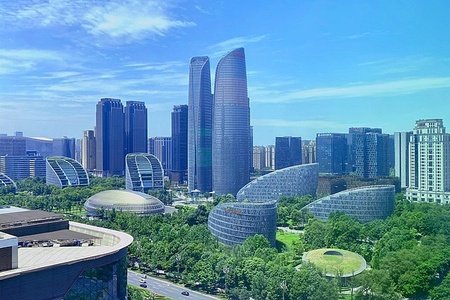
Mianyang
Name
Simplified Chinese: 绵阳
Traditional Chinese: 綿陽
Pronunciation
Mandarin pinyin: mián yáng
Cantonese jyutping: min4 joeng4
Population
citypopulation.de: 1,680,000
census 2020 (metro): 2,232,865
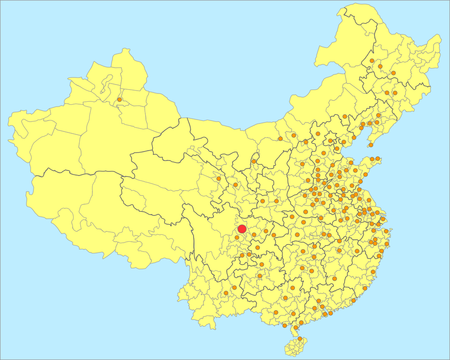
Mianyang is the second largest city in Sichuan. It was mostly known for the 2008 earthquake, where Beichuan County within the city administration was badly damaged. More than 1000 students died after two school buildings collapsed. These shoddy buildings were widely criticised as "tofu-dregs projects".

Nanchong
Name
Simplified Chinese: 南充
Traditional Chinese: 南充
Pronunciation
Mandarin pinyin: nán chōng
Cantonese jyutping: naam4 cung1
Population
citypopulation.de: 1,350,000
census 2020 (metro): 1,936,534

Nanchong is a typical agricultural city producing rice, oranges, silk worms and pork etc. It is not well known outside Sichuan.
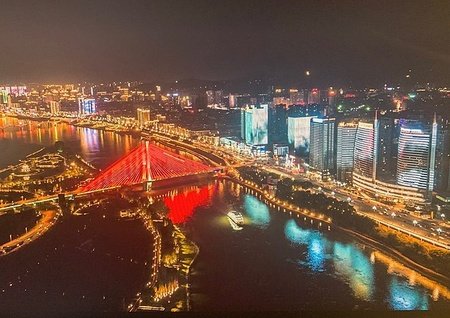
Dazhou
Name
Simplified Chinese: 达州
Traditional Chinese: 達州
Pronunciation
Mandarin pinyin: dá zhōu
Cantonese jyutping: daat6 zau1
Population
citypopulation.de: 1,260,000
census 2020 (metro): 1,850,869

Dazhou has a large natural gas reserve and supplies gas to the east of the country. Otherwise it is another small city that is not well known.

Wanzhou
Name
Simplified Chinese: 万州
Traditional Chinese: 萬州
Pronunciation
Mandarin pinyin: wàn zhōu
Cantonese jyutping: maan6 zau1
Population
citypopulation.de: 1,130,000
census 2020 (metro): 1,564,449
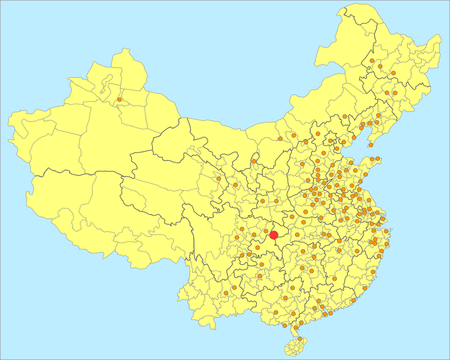
Wanzhou is on the upper reach of the Three Gorges of the Yangtze River. The old city centre was submerged when the dam was built and had to be relocated.
When Chongqing split from Sichuan in 1997 and became its own municipality, Wanzhou became a "district" of Chongqing, although it is 220 km away from Chongqing's city centre.

Chongqing
Name
Simplified Chinese: 重庆
Traditional Chinese: 重慶
Pronunciation
Mandarin pinyin: chóng qìng
Cantonese jyutping: cung4 hing3
Population
citypopulation.de: 10,500,000
census 2020 (metro): 10,343,462

Chongqing is one of the four municipalities in China along with Beijing, Tianjin and Shanghai. Roughly the size of Austria and a total population of 32 million, it is officially the largest city proper in the world. But in reality, it is more like a province than a city, as Chongqing was carved out of Sichuan when it became too large, and the rivalry between Chengdu and Chongqing became too hard to manage.
Chongqing is important in modern Chinese history. It served as the wartime capital from 1937 to 1946. More recently, between 2007-12 when Bo Xilai (who was credited for modernising Dalian in the 90s) was the party secretary of Chongqing, he implemented controversial populist policies and promoted socialist ideology in the so-called "Chongqing model" that transformed the city into a modern metropolis.
Chongqing is affectionately known as the "magical hill city" because of its steep terrain. You will find frighteningly tall flyovers, endless stairs and intriguing buildings where the 27th floor is on the street level. Watch this virial video to get a sense of it.
Finally, Chongqing is renowned for its numbingly spicy hot pot. It is virtually impossible to find any food that is not spicy here. So think twice before visiting if you cannot handle the heat.

Luzhou
Name
Simplified Chinese: 泸州
Traditional Chinese: 瀘州
Pronunciation
Mandarin pinyin: lú zhōu
Cantonese jyutping: lou4 zau1
Population
citypopulation.de: 1,240,000
census 2020 (metro): 1,596,119
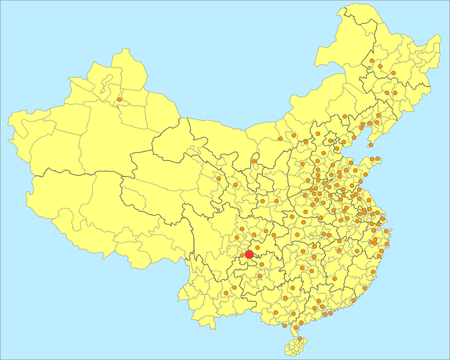
Luzhou is known as the "Liquor City" that produces the strong Chinese spirit. The most famous one is the Luzhou Old Cellar, of which the distillery dates back to 1573. It is a major sponsor of the Australian Open, and you can see its billboards featured prominently around the tennis courts.

Yibin
Name
Simplified Chinese: 宜宾
Traditional Chinese: 宜賓
Pronunciation
Mandarin pinyin: yí bīn
Cantonese jyutping: ji4 ban1
Population
citypopulation.de: 1,210,000
census 2020 (metro): 1,825,516
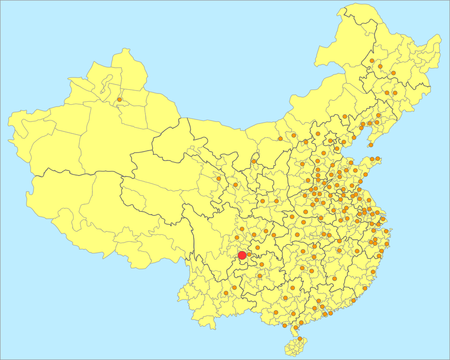
Yibin is located on the Yangtze River upstream from Luzhou, and is the first major city on the river. Above Yibin the Yangtze is known as Jinsha Jiang, which means "Golden Sand River".
It is another "Liquor Capital" of China famous for its Wuliangye spirit, which is the city's largest employer and provides 70% of the city's incomes.
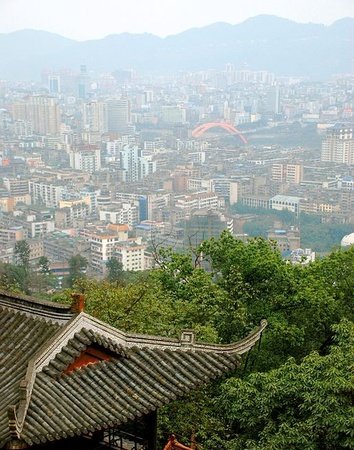
Zunyi
Name
Simplified Chinese: 遵义
Traditional Chinese: 遵義
Pronunciation
Mandarin pinyin: zūn yì
Cantonese jyutping: zeon1 ji6
Population
citypopulation.de: 1,860,000
census 2020 (metro): 2,360,549

Zunyi is the second largest city in Guizhou province. It is known for the 1935 Zunyi Conference, at which Mao Zedong won the leadership of the Communist Party during the Long March.
The town of Maotai west of Zunyi is more widely known because of the Maotai spirit. It is the most popular distilled liquor in China, something like vodka to the Russian.

Guiyang
Name
Simplified Chinese: 贵阳
Traditional Chinese: 貴陽
Pronunciation
Mandarin pinyin: guì yáng
Cantonese jyutping: gwai3 joeng4
Population
citypopulation.de: 4,850,000
census 2020 (metro): 4,506,134

Guiyang is the capital of Guizhou. It has an elevation over 1100 metres. Rain is common here and it sometimes snows in winter despite its low latitude.
Traditionally a centre of aluminium production, its economy is being transformed and growing rapidly, thanks to large investment in big data computing and innovation.

Qujing
Name
Simplified Chinese: 曲靖
Traditional Chinese: 曲靖
Pronunciation
Mandarin pinyin: qŭ jìng
Cantonese jyutping: kuk1 zing6
Population
citypopulation.de: 1,070,000
census 2020 (metro): 1,594,721

Qujing is the second largest city in Yunnan and is known as the origin of the Pearl River. Other than that, it is relatively unheard of.
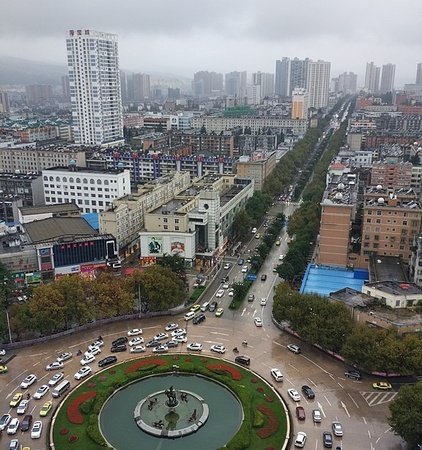
Kunming
Name
Simplified Chinese: 昆明
Traditional Chinese: 昆明
Pronunciation
Mandarin pinyin: kūn míng
Cantonese jyutping: kwan1 ming4
Population
citypopulation.de: 6,250,000
census 2020 (metro): 5,689,834

Kunming is the capital of Yunnan and the only major city in the province. It is known as the "Spring City" for its temperate climate at high altitude (over 1900 m). Due to the province's mountainous terrain, most transportation is by air and it was the terminus of the Burma Road during WW2. With a new airport opened in 2012, it continues as an aviation hub connecting China to Southeast Asia.
The city is located on the shore of the Dian Lake. It was the model of the Kunming Lake in the Summer Palace in Beijing.
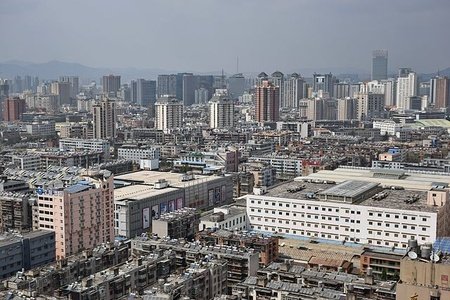
Guilin
Name
Simplified Chinese: 桂林
Traditional Chinese: 桂林
Pronunciation
Mandarin pinyin: guì lín
Cantonese jyutping: gwai3 lam4
Population
citypopulation.de: 1,700,000
census 2020 (metro): 1,725,865
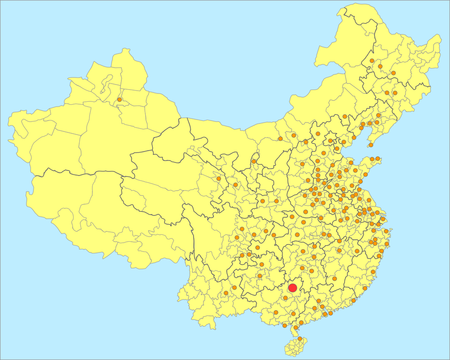
Guilin is in the northeast of Guangxi Zhuang Autonomous Region and used to be the capital before it was moved to Nanning in 1950. It gives the short name Gui to Guangxi.
Guilin has long been renowned for its scenery of karst landscape. It is a mecca for both domestic and international tourists, with a reputation that "Guilin's scenery tops the world". Bill Clinton came here during his state visit to China in 1998.

Liuzhou
Name
Simplified Chinese: 柳州
Traditional Chinese: 柳州
Pronunciation
Mandarin pinyin: liŭ zhōu
Cantonese jyutping: lau5 zau1
Population
citypopulation.de: 2,350,000
census 2020 (metro): 2,519,051

Liuzhou is in Guangxi and over half of its population are made up of minority ethnic groups rather than Han Chinese. It is famous for its high quality timber, especially for making coffins. There is a popular proverb, "wear clothes in Suzhou, play in Hangzhou, eat in Guangzhou and die in Liuzhou".
Liuzhou is also famous for its speciality called luosifen, which is a noodle soup that stinks badly.

Nanning
Name
Simplified Chinese: 南宁
Traditional Chinese: 南寧
Pronunciation
Mandarin pinyin: nán níng
Cantonese jyutping: naam4 ning4
Population
citypopulation.de: 5,100,000
census 2020 (metro): 5,977,185

Yulin
Name
Simplified Chinese: 玉林
Traditional Chinese: 玉林
Pronunciation
Mandarin pinyin: yù lín
Cantonese jyutping: juk6 lam4
Population
citypopulation.de: 1,510,000
census 2020 (metro): 1,226,830

Yulin is infamous for its annual Lychee and Dog Meat Festival. It is an unofficial "festival" organised by the locals, who could not understand what all the fuss is about as they see dogs as no different from other livestock. The government tried to ban the dog meat trade amidst COVID, but the festival resumed in 2021 in defiance of the government rules, although reportedly in a much smaller scale.

Beihai
Name
Simplified Chinese: 北海
Traditional Chinese: 北海
Pronunciation
Mandarin pinyin: bĕi hăi
Cantonese jyutping: bak1 hoi2
Population
citypopulation.de: 1,020,000
census 2020 (metro): 989,034
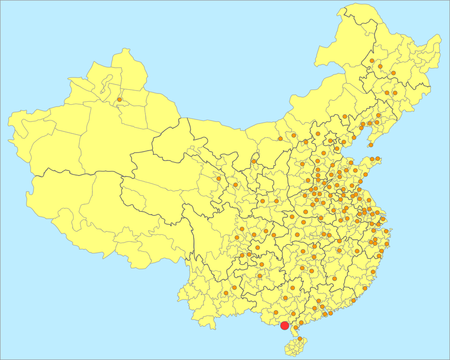
Beihai (literally "north sea") used to be part of Guangdong before transferred to Guangxi in 1951. It is a port city on the north shore of Gulf of Tonkin. It has a large shipyard and major fisheries. However, its economy lags behind other cities after the property bust in the 1990s. Nowadays, the city is infamous for its many scams and pyramid schemes, e.g. "I have insider news that the Central Government is going to make Beihai the next Shenzhen".
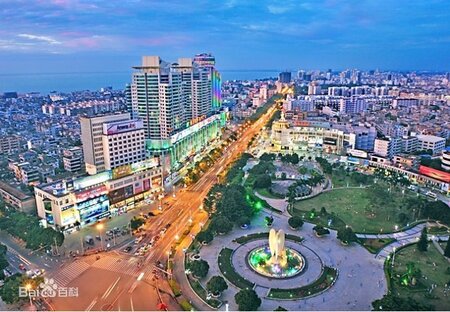
This concludes the mammoth task of describing all 132 Chinese cities listed in citypopulation.de. Anyone (including the Chinese) will be overwhelmed by the sheer number of cities and no one can really know them all. So to help you digest the list, here is a summary table:
| Blog | Largest City | Everyone should know | JetPunkers should know | Large and/or interesting cities worth knowing | Don't bother |
|---|---|---|---|---|---|
| 1 | Shenyang | Dalian, Harbin, Ürümqi | Changchun, Hohhot, Yinchuan | Daqing, Qiqihar, Jilin, Anshan, Baotou | Chifeng, Panjin, Jinzhou, Huludao |
| 2 | Beijing | Tianjin, Xi'an | Taiyuan, Lanzhou, Shijiazhuang | Tangshan, Qinhuangdao, Zhangjiakou, Datong, Xining | Changzhi, Baoding, Handan, Xingtai, Baoji |
| 3 | Qingdao | Jinan, Yantai | Weifang, Zibo, Weihai, Linyi | Dezhou, Dongying, Liaocheng, Tai'an, Heze, Jining, Zaozhuang, Rizhao | |
| 4 | Wuhan | Zhengzhou | Anyang, Xiangyang, Luoyang, Kaifeng, Shiyan, Yichang | Puyang, Jiaozuo, Xinxiang, Shangqiu, Zhoukou, Pingdingshan, Xuchang, Nanyang, Xinyang, Ezhou | |
| 5 | Nanjing | Hefei | Xuzhou, Lianyungang, Yancheng, Wuhu, Yangzhou, Zhenjiang | Huaibei, Suqian, Shuyang, Huai'an, Fuyang, Huainan, Bengbu, Lu'an, Taizhou (JS) | |
| 6 | Shanghai | Suzhou, Hangzhou | Wuxi, Ningbo, Fuzhou, Xiamen | Changzhou, Nantong, Jiaxing, Shaoxing, Yiwu, Taizhou (ZJ), Wenzhou, Quanzhou | Jiangyin, Huzhou, Jinhua, Yongkang, Shangrao, Cangnan |
| 7 | Guangzhou | Hong Kong, Shenzhen | Changsha, Nanchang, Shantou, Dongguan, Haikou | Yueyang, Jiujiang, Hengyang, Foshan, Zhuhai, Zhanjiang | Changde, Shaoyang, Ganzhou, Qingyuan, Zhaoqing, Maoming |
| 8 | Chengdu | Chongqing | Kunming, Guiyang, Nanning | Guilin, Luzhou, Yibin, Liuzhou, Yulin, Beihai | Mianyang, Nanchong, Dazhou, Wanzhou, Zunyi, Qujing |
To add to the challenge, here are few more Chinese cities that are not in the list but I think everyone should know too:
- Macau (澳门 / 澳門, pop. 683,200) - The former Portuguese territory is more than casinos and gambling. It has a rich culture, fantastic cuisine, and an UNESCO listed old city centre.
- Sanya (三亚 / 三亞, pop. 1,031,396) - Located on the southern end of Hainan Island, Sanya is a popular beachside resort city similar to Miami or Brighton.
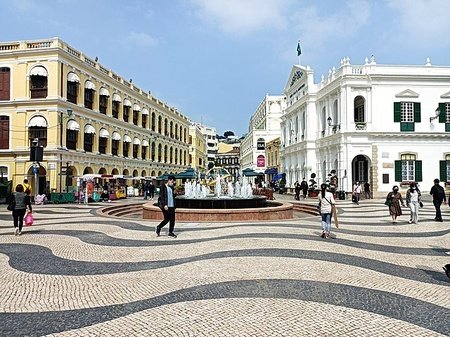

- Lhasa (拉萨 / 拉薩, pop. 648,044) - The Tibetan capital at over 3600 metre elevation is the spiritual centre for the Tibetan people and Tibetan Buddhism.
- Kashgar (喀什, pop. 309,600) - Located in Central Asia, Kashgar is the westernmost city of China. It was ruled by various empires throughout its long history. It is an important trading post on the Silk Road, a melting pot of different cultures, and one of the oldest continuously inhabited city in the world.


- Turpan (吐鲁番 / 吐魯番, pop. 317,443) - Located in the Turpan Depression as an important stopover on the Silk Road, it is a fertile oasis supported by the karez canal system.
- Dunhuang (敦煌, pop. 185,231) - A historical important gateway on the Silk Road between China proper and the Western Regions. The UNESCO listed Mogao Caves and Yumen Pass/Yang Pass, the western end of the Great Wall, are located nearby.
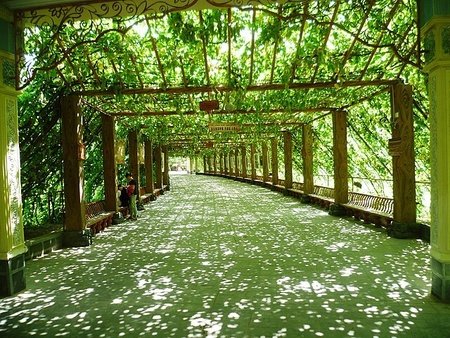
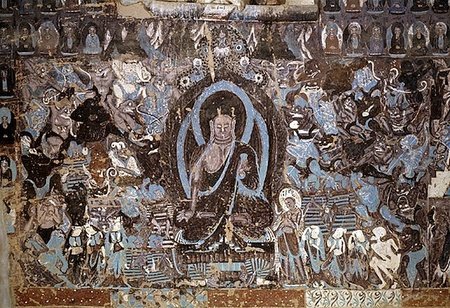
- Ordos (鄂尔多斯 / 鄂爾多斯, pop. 693,038) - The Inner Mongolian city is often described as the "ghost city" due to its many empty apartment buildings after years of overdevelopment. Nowadays, the cheap excess power supply is used by opportunists for bitcoin mining.
- Heihe (黑河, pop. 223,832) - Located in northern Heilongjiang on the Russian border, Heihe stands in stark contrast to the Russian city of Blagoveshchensk (Hailanpao in Chinese) opposite the Amur or Black Dragon River.
- Dandong (丹东 / 丹東, pop. 815,858) - It is the largest border city in China facing Sinuiju, North Korea across the Yalu River, offering a glimpse of the hermit kingdom.
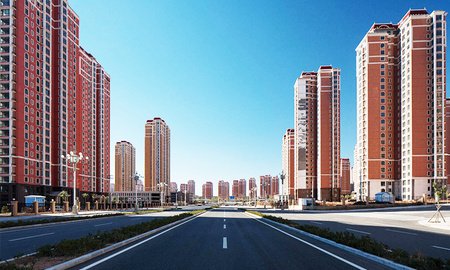
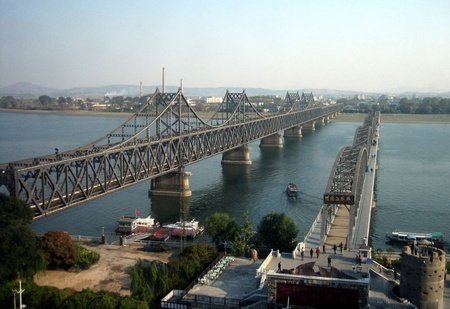
- Zhoushan (舟山, pop. 882,932) - Just off the coast of Ningbo, Zhoushan is an urbanised archipelago made up of 1814 islands.
- Jingdezhen (景德镇 / 景德鎮, pop. 584,816) - Located in northeastern Jiangxi, Jingdezhen is known as the "Porcelain Capital". It produces the finest quality of porcelain that shares the name with the country.
- Zhangjiajie (张家界 / 張家界, pop. 578,452) - Located in northwestern Hunan, Zhangjiajie draws many tourists to the Wulingyuan Scenic Area, a UNESCO World Heritage Site with over 3000 sandstone pillars and peaks. It was said to have inspired the movie Avatar. One of the columns is now officially (and unashamedly) renamed to "Avatar Hallelujah Mountain".


- Leshan (乐山 / 樂山, pop. 1,197,461) - Located south of Chengdu, it is famous for the Leshan Giant Buddha. Built in the 8th century and standing at 71 m tall, it is by far the tallest pre-modern statue in the world.
- Xichang (西昌, pop. 712,434) - Located in southern Sichuan, Xichang is known as the "Aerospace Capital" with its satellite launch centre, one of the four in China (along with Jiuquan, Taiyuan and Wenchang).
- Shangri-La (香格里拉, pop. 186,412) - Located in northwestern Yunnan's Dêqên Tibetan Autonomous Prefecture, it was
shamelesslyrenamed from Zhongdian County in an effort to promote tourism.
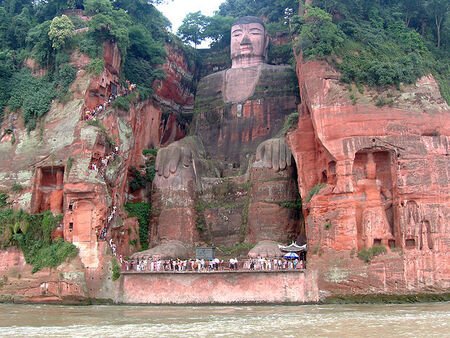

- Lijiang (丽江 / 麗江, pop. 288,787) - South of Shangri-La and next to the famous Jade Dragon Snow Mountain, Lijiang is a UNESCO listed historical town for the Nakhi people and is a popular tourist destination.
- Dali (大理, pop. 395,041) - Just south of Lijiang, Dali is the historical capital of the Dali Kingdom between the 10th and 13th centuries. The city surrounds the Erhai Lake and is home to the Bai and Yi minorities.
- Pu'er (普洱, pop. 416,188) - Further south from Dali, Pu'er is best known for the production of Pu'er tea, a kind of fermented dark tea that is one of the most commonly drunk tea in China especially in yumcha.

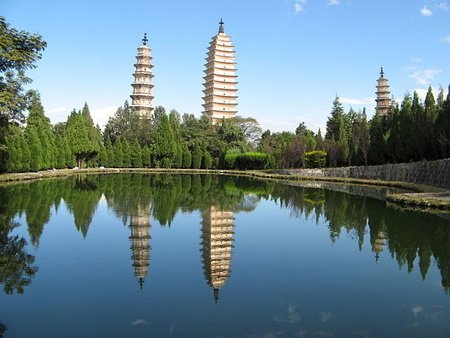
This is it. Now you are an expert in Chinese cities 😅, it is time to try my General Knowledge of Chinese Cities quiz (or the Chinese version here) and see if you have been paying attention. Good luck!

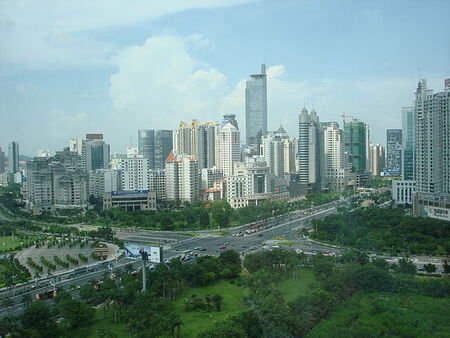
(I hope it's okay to promote this here.)